Filter by

Geometric Methods in Physics
This book features a selection of articles based on the XXXIV Białowieża Workshop on Geometric Methods in Physics, 2015. The articles presented are mathematically rigorous, include important physical implications and address the application of geometry in classical and quantum physics. Special attention deserves the session devoted to discussions of Gerard Emch's most important and lasting ac…
- Edition
- -
- ISBN/ISSN
- 978-3-319-31755-7
- Collation
- XII, 396
- Series Title
- -
- Call Number
- 516 GEO
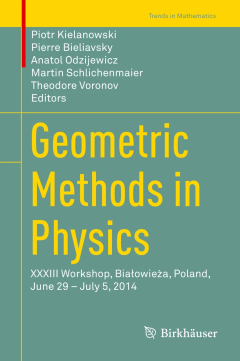
Geometric Methods in Physics
This book presents a selection of papers based on the XXXIII Białowieża Workshop on Geometric Methods in Physics, 2014. The Białowieża Workshops are among the most important meetings in the field and attract researchers from both mathematics and physics. The articles gathered here are mathematically rigorous and have important physical implications, addressing the application of geometry in…
- Edition
- -
- ISBN/ISSN
- 978-3-319-18211-7
- Collation
- -
- Series Title
- -
- Call Number
- 516 GEO
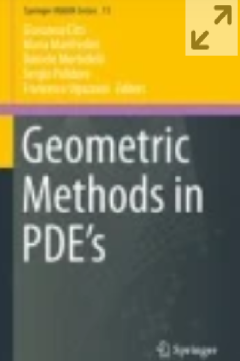
Geometric Methods in PDE’s
The analysis of PDEs is a prominent discipline in mathematics research, both in terms of its theoretical aspects and its relevance in applications. In recent years, the geometric properties of linear and nonlinear second order PDEs of elliptic and parabolic type have been extensively studied by many outstanding researchers. This book collects contributions from a selected group of leading exper…
- Edition
- -
- ISBN/ISSN
- 978-3-319-02665-7
- Collation
- XIII, 373
- Series Title
- -
- Call Number
- 516 GEO
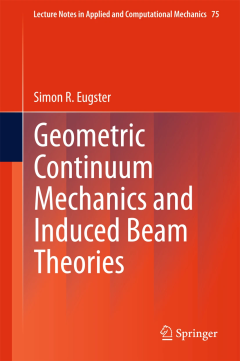
Geometric Continuum Mechanics and Induced Beam Theories
This research monograph discusses novel approaches to geometric continuum mechanics and introduces beams as constraint continuous bodies. In the coordinate free and metric independent geometric formulation of continuum mechanics as well as for beam theories, the principle of virtual work serves as the fundamental principle of mechanics. Based on the perception of analytical mechanics that force…
- Edition
- -
- ISBN/ISSN
- 978-3-319-16494-6
- Collation
- IX, 146
- Series Title
- -
- Call Number
- 516 EUG g
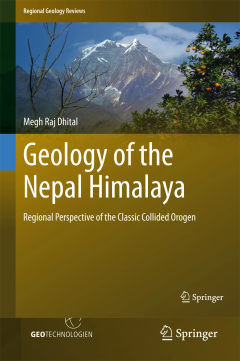
Geology of the Nepal Himalaya
This book addresses the geology of the entire Himalayan range in Nepal, i.e., from the Gangetic plain in the south to the Tethyan zone in the north. Without a comprehensive look at the various Himalayan zones, it is practically impossible to fully grasp the processes at work behind the formation and development of the spectacular Himalaya. However, the goal is not merely to document all the sci…
- Edition
- -
- ISBN/ISSN
- 978-3-319-02495-0
- Collation
- -
- Series Title
- -
- Call Number
- 550 DIT g
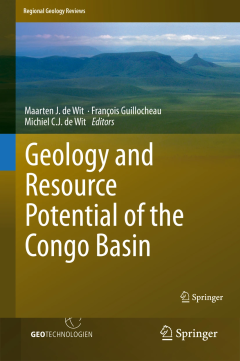
Geology and Resource Potential of the Congo Basin
This book summarizes the geomorphology, geology, geochronology, geophysics and mineral resources of the Congo Basin, one of the world’s most enigmatic and poorly understood major intra-continental sedimentary basins, and its flanking areas of Central Africa. It provides an up to date analysis of the large region’s origin and evolution. The book’s nineteen chapters take the reader through …
- Edition
- -
- ISBN/ISSN
- 978-3-642-29481-5
- Collation
- XLII, 417
- Series Title
- -
- Call Number
- 550 GEO
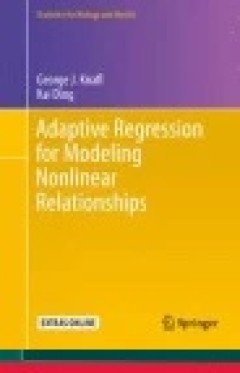
Adaptive Regression for Modeling Nonlinear Relationships
This book presents methods for investigating whether relationships are linear or nonlinear and for adaptively fitting appropriate models when they are nonlinear. Data analysts will learn how to incorporate nonlinearity in one or more predictor variables into regression models for different types of outcome variables. Such nonlinear dependence is often not considered in applied research, yet non…
- Edition
- Ed. 1
- ISBN/ISSN
- 978-3-319-33946-7
- Collation
- XXV, 372
- Series Title
- Statistics for Biology and Health
- Call Number
- 519.5 KNA a
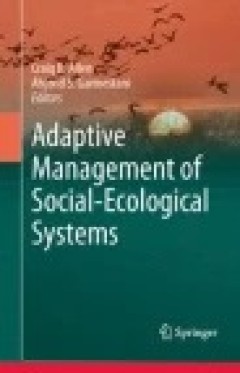
Adaptive Management of Social-Ecological Systems
Adaptive management is an approach to managing social-ecological systems that fosters learning about the systems being managed and remains at the forefront of environmental management nearly 40 years after its original conception. Adaptive management persists because it allows action despite uncertainty, and uncertainty is reduced when learning occurs during the management process. Often termed…
- Edition
- Ed. 1
- ISBN/ISSN
- 978-94-017-9682-8
- Collation
- XIII, 264
- Series Title
- -
- Call Number
- 574.5 ADA a
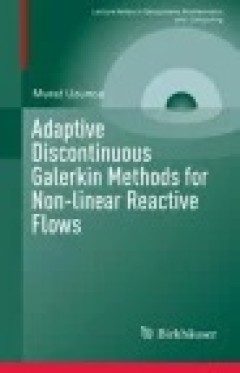
Adaptive Discontinuous Galerkin Methods for Non-linear Reactive Flows
The focus of this monograph is the development of space-time adaptive methods to solve the convection/reaction dominated non-stationary semi-linear advection diffusion reaction (ADR) equations with internal/boundary layers in an accurate and efficient way. After introducing the ADR equations and discontinuous Galerkin discretization, robust residual-based a posteriori error estimators in space…
- Edition
- Ed. 1
- ISBN/ISSN
- 978-3-319-30130-3
- Collation
- IX, 105
- Series Title
- Lecture Notes in Geosystems Mathematics and Computing
- Call Number
- 515.3 UZU a

Geological Storage of CO2 – Long Term Security Aspects
This book explores the industrial use of secure, permanent storage technologies for carbon dioxide (CO2), especially geological CO2 storage. Readers are invited to discover how this greenhouse gas could be spared from permanent release into the atmosphere through storage in deep rock formations. Themes explored here include CO2 reservoir management, caprock formation, bio-chemical processes and…
- Edition
- -
- ISBN/ISSN
- 978-3-319-13929-6
- Collation
- X, 245
- Series Title
- -
- Call Number
- 551 GEO
 Computer Science, Information & General Works
Computer Science, Information & General Works  Philosophy & Psychology
Philosophy & Psychology  Religion
Religion  Social Sciences
Social Sciences  Language
Language  Pure Science
Pure Science  Applied Sciences
Applied Sciences  Art & Recreation
Art & Recreation  Literature
Literature  History & Geography
History & Geography